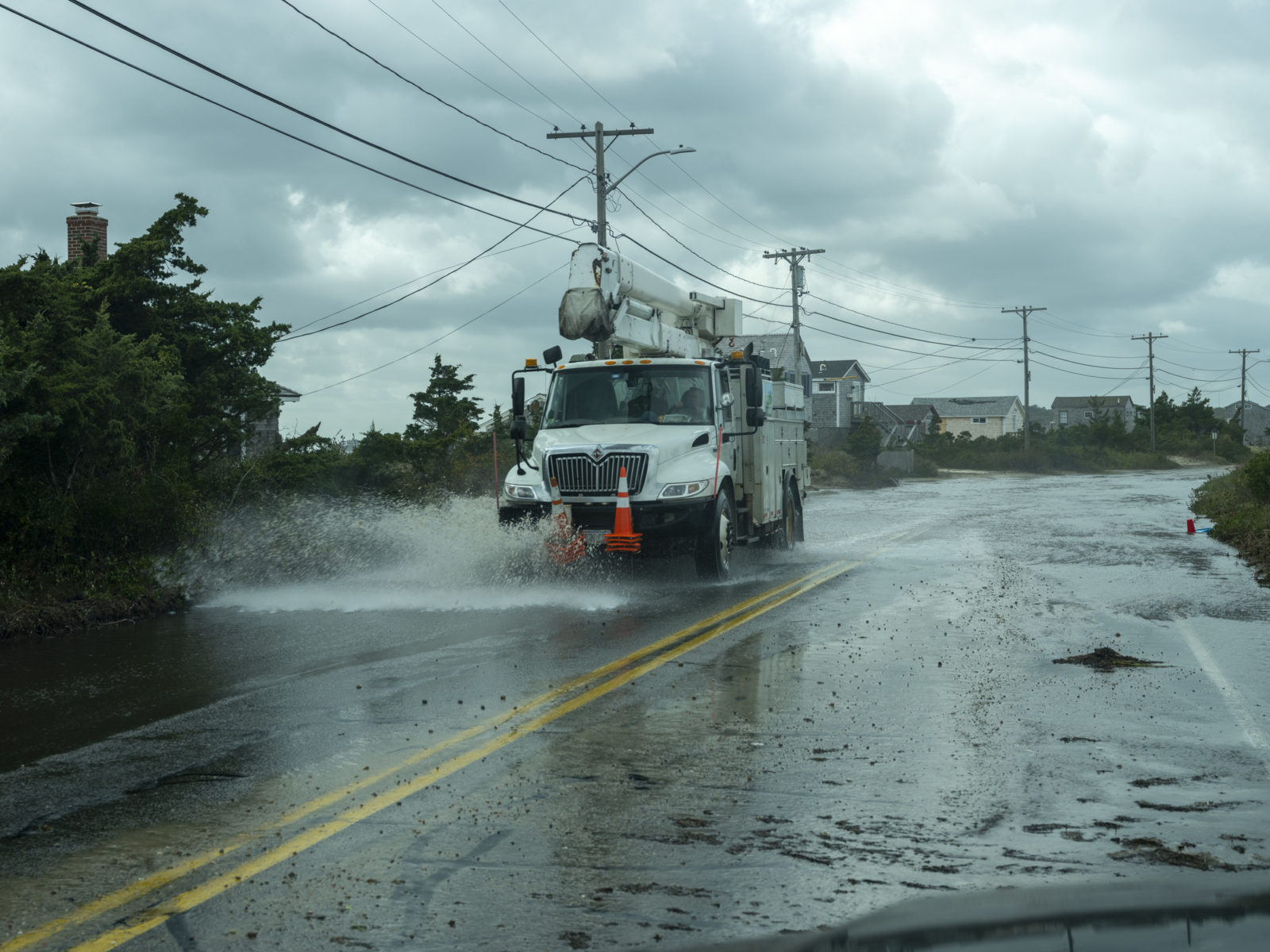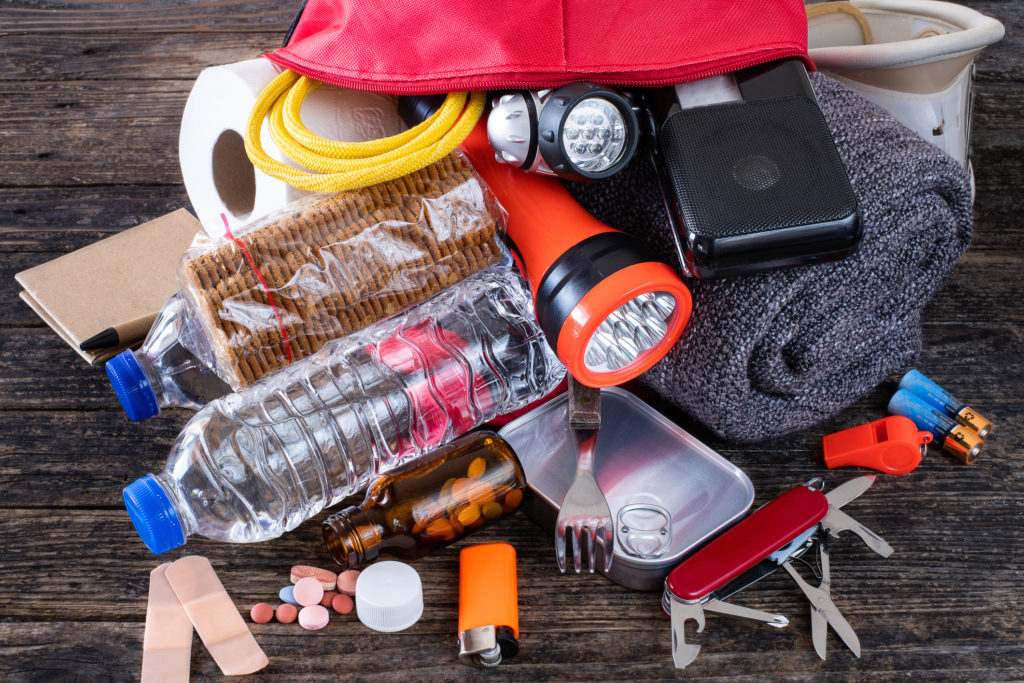Do You Have a Weather Emergency Plan?
 August 7, 2020
August 7, 2020Add “extremely active storm year” to the list of things 2020 has brought to the table. As the Lehigh Valley cleans up from Tropical Storm Isaias, a flash flood watch is in effect until early Saturday morning. And according to forecasters, more storms will be coming in the weeks and months ahead — double the number of a normal hurricane season. The last time that happened was 2005, which spawned 28 storms, including Wilma and Katrina.
In times of severe weather, having an emergency plan in place can be a lifesaver. Here’s how to get started today.
Make a Plan
The National Weather Service has a page dedicated to what you should do in the event of a flood. Some of the tips include Turn Around, Don’t Drown if you reach a flooded road; definitions of flood hazards such as flash floods, storm surges, river floods and more; and flood safety tips. It’s a good place to start on your emergency plan.
However, we also recommend following the advice of agencies and organizations such as The American Red Cross, the CDC, and Ready.gov. Their tips include:
1.) Complete a contact card (click for download) for each member of the family, which includes home, cell and work phone numbers, social media identification (for instance, Facebook and Twitter usernames); additional contact information for schools, workplaces, friends and other family members; email addresses; important medical information, and more.
2.) Choose an emergency contact, such as a family member, and memorize their phone number.
3.) Teach everyone how to text — from your preschooler to grandma — and ensure everyone knows how to use a cell phone.
4.) Identify the safe spots in your home for each type of natural disaster. This is key to any emergency plan. During a tornado or other storm with high winds, that’s a low spot away from windows. In an earthquake, it’s in a sturdy area, such as under a well-built desk or table.
5.) Identify several escape routes from your house to use in case of a fire, flood, or other natural disaster.
6.) Pick out several meeting places, and make sure everyone knows where they are. It could be outside of your house near a shed in case of a fire, or at a neighbor’s house, or somewhere outside of the neighborhood, like your Aunt Patty’s house.
7.) Identify family members’ responsibilities in the event of an emergency. For instance, Mom grabs the emergency kit; Dad is in charge of getting the car; a son gathers blankets; a daughter rounds up pets.
8.) Teach your children how to call 911, and when to use it.

9.) Make an emergency kit, which includes things like any medication family members require; first-aid supplies; flashlights; clean water; and more.
10.) Have an emergency plan for your pets.
11.) Know where to turn off your home’s electrical, water and gas supplies.
12.) Plastic 2-liter soda bottles can be rinsed out after use, then filled with water, capped, and placed in a freezer. If the power goes out, they’ll provide some backup cooling power and extend the life of your frozen food. They can also be a great source of clean water.
13.) Make sure your home insurance is up-to-date, and review whether you should have flood insurance or other natural disaster insurance.
And because this year’s hurricane season doesn’t end until Nov. 30, here are a few tips from Ready.Gov to help you create an emergency supply kit for storms all year round:
What to include
- Water, one gallon of water per person per day for at least three days, for drinking and sanitation
- Food, at least a three-day supply of non-perishable food
- Battery-powered or hand crank radio and a NOAA Weather Radio with tone alert and extra batteries for both
- Flashlight and extra batteries
- First aid kit
- Whistle to signal for help
- Face masks, plastic sheeting and duct tape to shelter-in-place
- Moist towelettes, garbage bags and plastic ties for personal sanitation
- Wrench or pliers to turn off utilities
- Can opener for food (if kit contains canned food)
- Local maps
- Cell phone with chargers, inverter or solar charger
Additional Items to Consider
- Prescription medications and glasses
- Infant formula and diapers
- Sleeping bag or warm blanket for each person. Consider additional bedding if you live in a cold-weather climate.
- Pet food and extra water for your pet
- Cash or traveler’s checks and change
- Important family documents such as copies of insurance policies, identification and bank account records in a waterproof, portable container. You can use the downloadable Emergency Financial First Aid Kit (EFFAK) developed by Operation Hope, FEMA and Citizen Corps to help you organize your information.
- Emergency reference material such as a first aid book or information from www.ready.gov.
- Complete change of clothing including a long sleeved shirt, long pants and sturdy shoes. Consider additional clothing if you live in a cold-weather climate.
- Household chlorine bleach and medicine dropper – when PROPERLY diluted, bleach can be used as a disinfectant; in an emergency, it can be used to treat drinking water. Do not use scented, color safe or bleaches with added cleaners.
- Fire Extinguisher
- Matches in a waterproof container
- Feminine supplies and personal hygiene items
- Mess kits, paper cups, plates and plastic utensils, paper towels
- Paper and pencil
- Books, games, puzzles or other activities for children